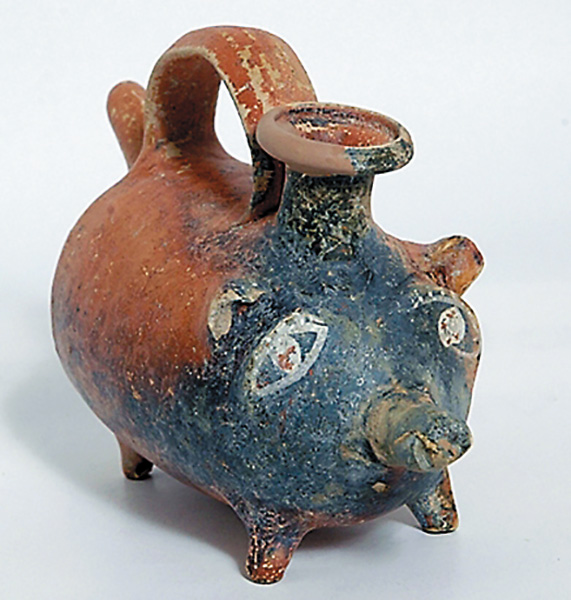
A. Israelite watering can
B. Messapian baby bottle
C. Egyptian piggy bank
D. Philistine canteen
E. Greek wine jar
Answer: B. Messapian baby bottle
Discovered in a Hellenistic-period tomb in the region of Puglia in the “heel” of Italy, this pig-shaped terracotta vessel—known as a guttus—was both a baby bottle and a toy. Terracotta rattles in the pig’s belly may have helped soothe babies. The tomb, dated between the end of the fourth and the third-second centuries B.C., was found during excavations conducted by the Archaeological Superintendency of Puglia in the town of Manduria. During the Hellenistic period, the region was inhabited by the Messapians, a tribal people who are popularly believed to have migrated from Illyria in the western Balkan Peninsula around 1000 B.C. The remains of two individuals were found in the rock-cut tomb. The excavators believe the tomb may have also held the remains, long since decomposed, of a newborn baby, or that the female individual had been pregnant at the time of her death.
Already a library member? Log in here.
Institution user? Log in with your IP address.

